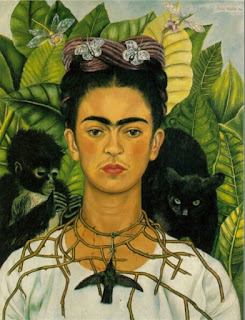Samuel Palmer (1805-1881) was a British landscape printer, etcher and printmaker. From the age of 12, Palmer found an interest in painting churches, by 14, his work was presented at the Royal Academy. In 1824, Palmer was introduced to William Blake, his influence Palmer throughout his work and can be seen. In 1835, Palmer moved back to London. During this type his working style had changed from mystical and changed to a more conventional way of working. In 1837, Palmer took to using watercolours and was made a full member of the watercolour society in 1854.
Between the years of 1850 and 1880, Palmer created his landscape etchings. His fantastic attention to detail is what makes his etchings so spectacular. The difference in tone makes the landscapes look almost like a photograph by creating a sense of distance within the image. His work also shows an amazing contrast between light and dark which makes the etchings more realistic. Some of my favourites include; Christmas 1850, The sleeping shephard; early morning 1857 and Moeris and Galatea 1880/83.
Thursday, 23 February 2017
Wednesday, 22 February 2017
Self portrait - Frida Kahlo influence
I decided to use Frida Kahlo's, self portrait with thorn necklace and hummingbird 1940 for my inspiration. I found Kahlo's work to be interesting, raw and full of depth. After a tragic accident that happened when she was younger, she experienced a lot of pain and dispair. She used her emotion and experience to create her art, where pain was a common feeling presented in most.
In my image, I drew myself with barbwire cutting into my neck, this is to represent suffocation. It also shows lack of control and distress through the wire piercing the skin. I also added scars to my face to show an idea of damage. When I look in the mirror I don't recognise the person looking back, I see someone who is scarred, broken and hideous, I feel anger and misery all at once. The Oriental lily in my hair is meant to stand out from the rest of the image, it resembles beauty, fragile and innocence. Whereas on the other side, there is a raven, constantly watching my every move, waiting for any sign of weakness. I enjoyed this type of work but would have preferred to have more time to perfect it.
Wednesday, 8 February 2017
Self portrait, hand supporting head
I was asked to do a self portrait with my head supported by my hand. I thought about an everyday pose, then I figured I would try something different. I decided to cover half my face with my hand, showing only half of my left eye. I decided to keep this one in pencil as I figured colour would ruin it. I enjoyed doing this one but feel there is something missing and im not sure what. I dohowever, feel that the reflects the mood I was in at the time.
Giovanni Battista Piranesi (1720-1778)
Giovanni Battista Piranesi (1720-1778) was an Italian Artist, known as one of the greatest printmakers of the 18th century. In 1740, he became an apprentice to Giuseppe Vasi,an Italian etcher and Architect who introduced Piranesi to etching and engraving. After this, Piranesi worked with some pupils from the French academy in Rome. It was during this time that his first work, Prima parte Di Architettura e prospettitive (1743) was created. Between 1743-1747, Piranesi opened a workshop in Via del Corso. It was at this time, it was thought he often visited Giovanni Battista Tiepolo, a leading Artist in Venice. Over the next 30 years, Piranesi continued to work on a variety of different projects including restoring the ancient sculpture, the Piranesi Vase. In 1778, after suffering from an illness, Piranesi died.
Piranesi's work was recognised for the imagination and fantasy which he was able to make visible in his etchings. He would improve the buildings by adding lighting effects and tone. His use of light and dark tone, made his etchings realistic and interesting. Piranesi has also paid close attention to shapes and angles when looking at composition. "The prisons" is a series of 16 prints, containing stairs, walls and machinery. His idea was to provide an imaginative view of a prison interior. Some of these etchings also inspired romanticism and surrealism.
Above are a selection of my favourite etchings. I find the detail within each etching absolutely incredible. The variation of tone and line work make the images beautiful to look at, I feel I could spend hours with them.
Piranesi's work was recognised for the imagination and fantasy which he was able to make visible in his etchings. He would improve the buildings by adding lighting effects and tone. His use of light and dark tone, made his etchings realistic and interesting. Piranesi has also paid close attention to shapes and angles when looking at composition. "The prisons" is a series of 16 prints, containing stairs, walls and machinery. His idea was to provide an imaginative view of a prison interior. Some of these etchings also inspired romanticism and surrealism.
The Arch of Trajan at Benevito
The Pyramid of Cestius
Carceri plate VI - The Smoking Fire
Carceri plate VII - The Drawbridge
Carceri Plate XIV- The Gothic Arch
Carceri Plate IX - The Giant Wheel
Above are a selection of my favourite etchings. I find the detail within each etching absolutely incredible. The variation of tone and line work make the images beautiful to look at, I feel I could spend hours with them.
Subscribe to:
Comments (Atom)













